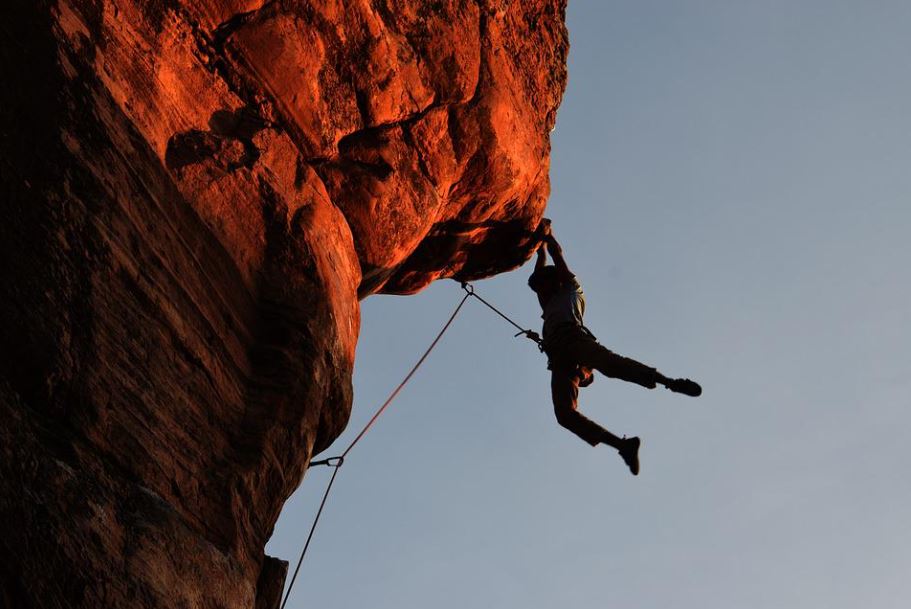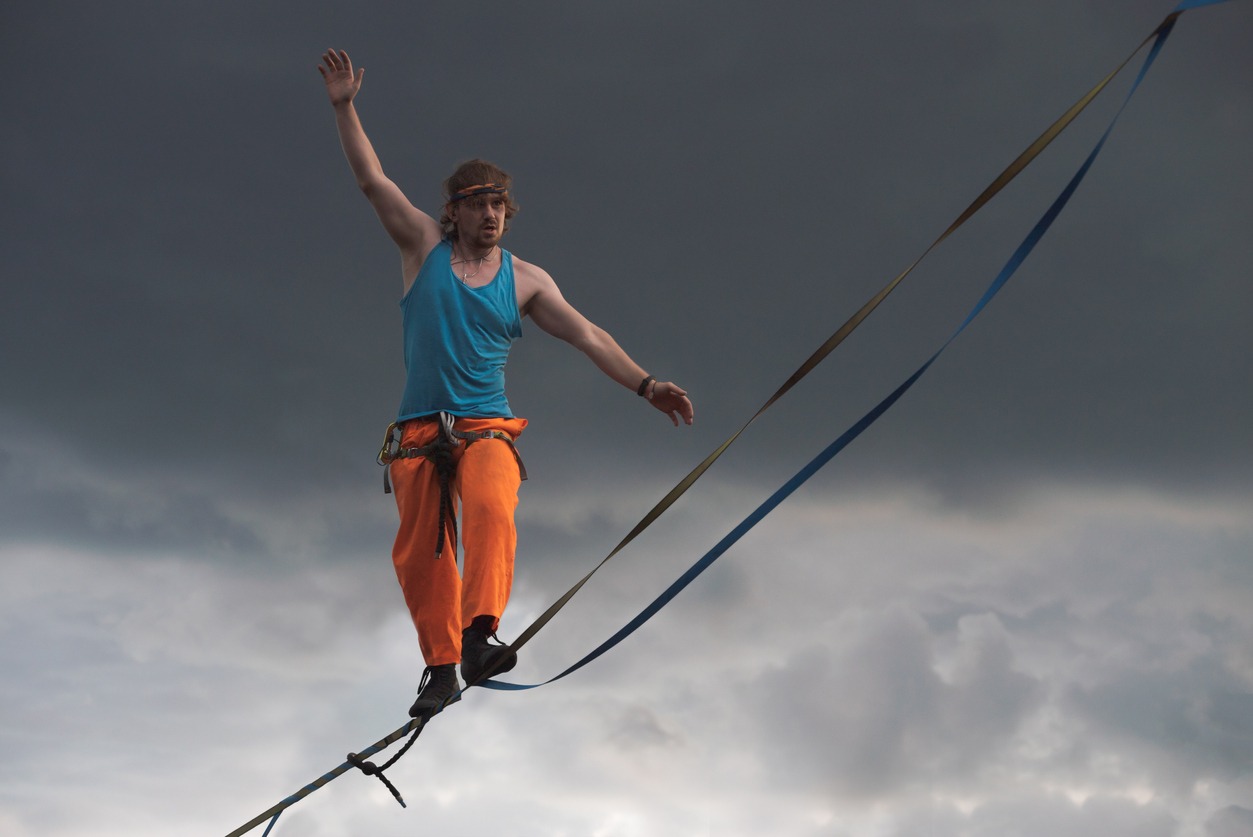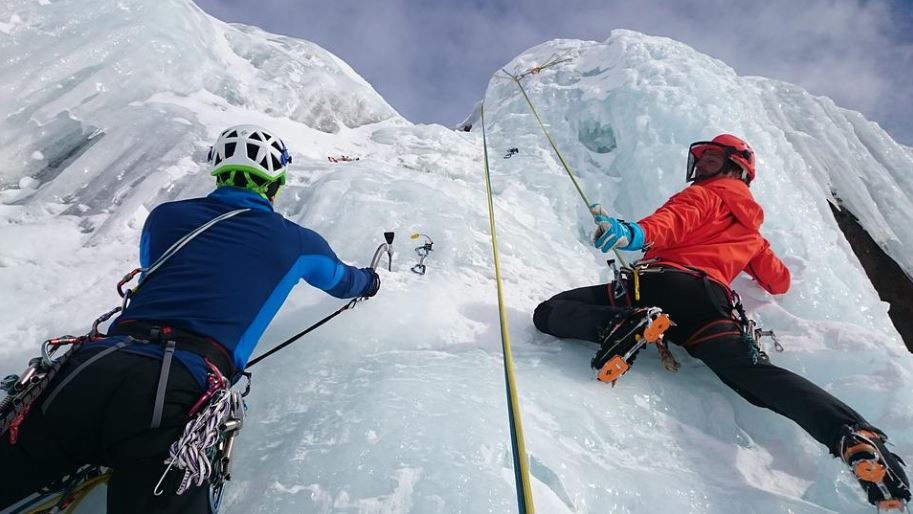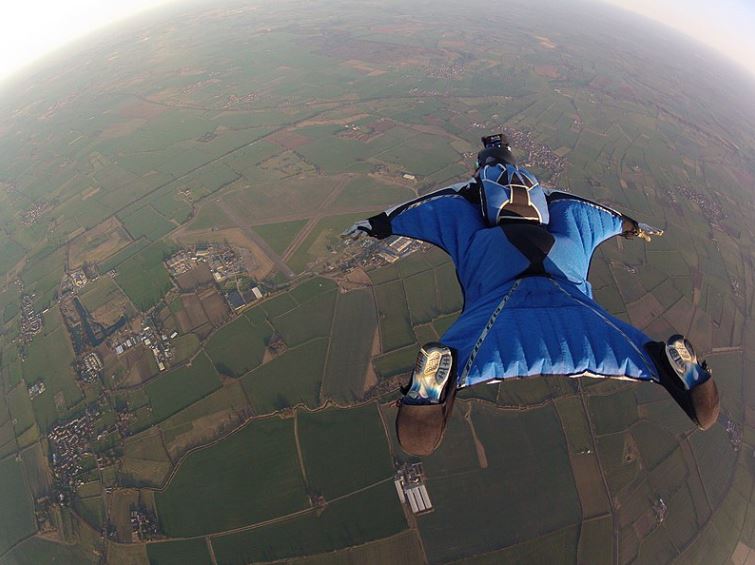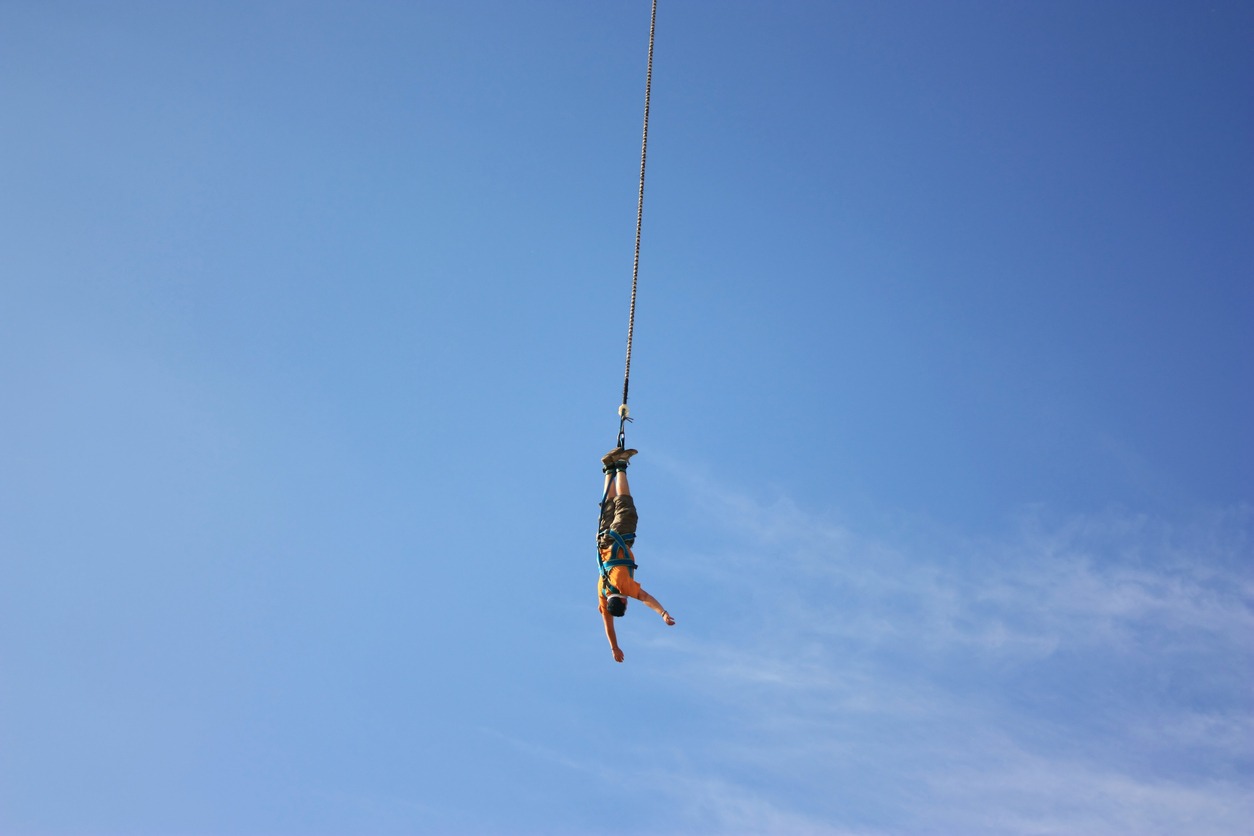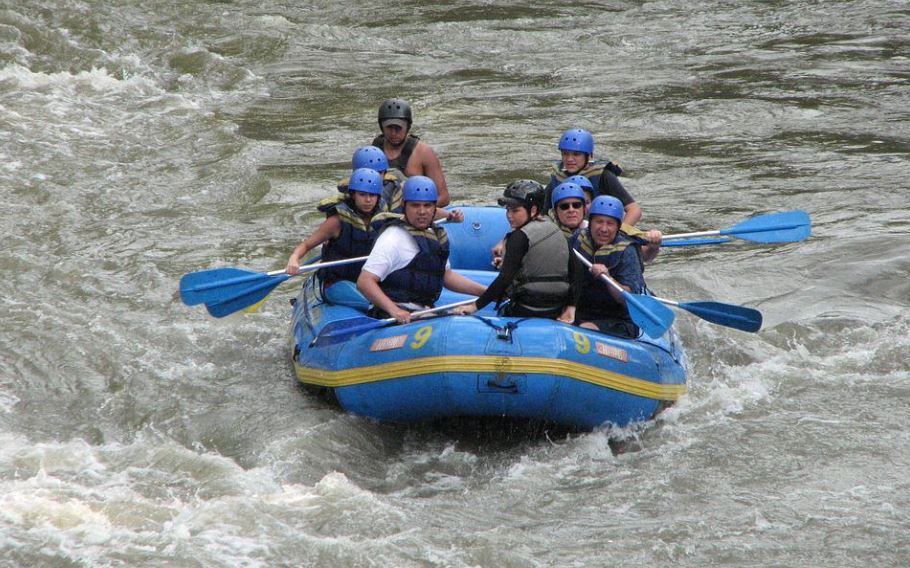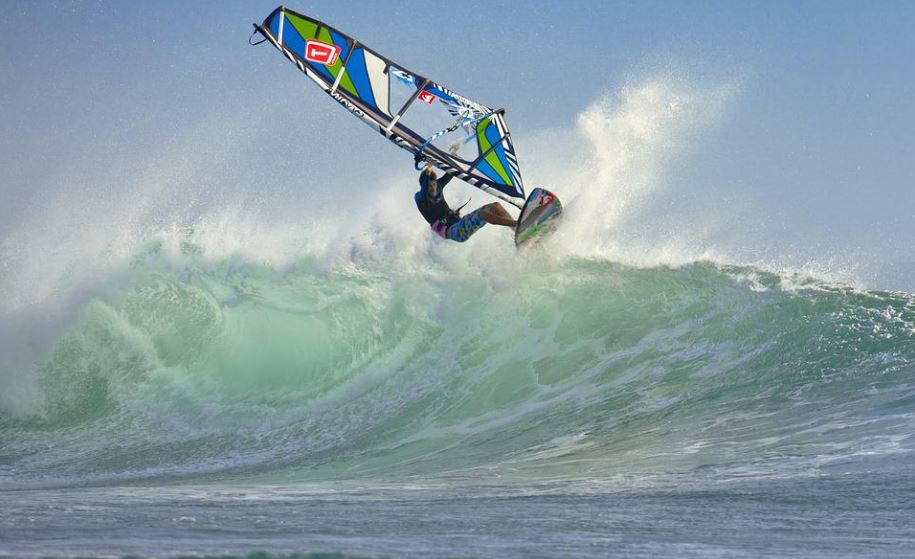Sports boost adrenaline. Imagine you’re up to bat in the seventh World Series game or the quarterback for a team 80 yards from winning the Super Bowl but losing by six points with two minutes left. Michael Jordan’s championship was on the line in the 1998 NBA finals’ final shot. Can you picture what he was thinking as he tried to win? Those situations may raise your heart rate and blood pressure, but they’re nothing compared to the dangers extreme sports participants confront. The stakes are more extensive than merely winning a game or title when they compete. A single misstep might be disastrous. Extreme sports place athletes in danger and require physical and mental toughness to participate. These sports necessitate physical exertion as well as the use of specialized equipment. People enjoy the adrenaline rush that comes with life-threatening activities.
1. Highlining
Highlining is similar to rope walking but is performed at a somewhat greater height. Highlining is an extreme sport in which participants must walk from one end of a rope without any support other than a safety harness attached to the rope. The rope is one inch wide. The length of the rope is around 30 meters, and the event is taking place at the top of a cliff that is several thousand feet above the ground.
The rope is made of tubular nylon webbing material, which makes it stretcher than a steel cable and more flexible, which enables it to swing significantly more. Because of this, the highliner will have a tough time traversing the gap without falling. Although it is absurd and dangerous to engage in this activity due to the lack of a safety net and the likelihood of injuring oneself despite the presence of a safety harness, its extreme nature draws a large number of enthusiasts looking for a rush of adrenaline.
2. Volcano Surfing
Despite its terrifying sounding name, this relatively new sport is very much a thing that can be done. Invented by Darryn Webb in 2005, volcano surfing involves climbing a volcano and surfing it down on plywood boards. On the other hand, the board will be pretty resistant to the volcano because it has been reinforced with steel, metal, and Formica. The surfer can sit down on the board or stay upright, though veteran volcano surfers frequently choose the latter. Surfers must wear goggles and a jumpsuit owing to the possibility of hitting volcano rocks during the slide. The most famous volcano surfing slope is Cerro Negro in western Nicaragua, which is still active after its last eruption in 1999. Since its beginning, volcano surfing has seen many mishaps, but its simplicity has excited extreme sports fans.
3. Ice Climbing
Ice climbing involves climbing icefalls, frozen waterfalls, cliffs, and ice-covered rock slabs. It is particularly popular among those who live in areas with harsh winter conditions. Alpha ice and water ice are different kinds of climbing ice. Both types of terrain require various tools to scale. Before the twentieth century, ice climbers had to deal with multiple challenges, such as making their foothold. They chipped ice with an icepick to gain a foothold, but the British changed that. They reinvented the sport by adding a claw to the climbing boots. This ‘cramp-on’ supplanted the conventional approach of step cutting’ and led to ice climbing advancements. The activity has become safer over time, but first-timers face significant risks. Dealing with the icy cold requires a lot of fitness and concentration, and a slight mistake means an accident is waiting to happen.
4. Wing Suit Flying
Flying with a wingsuit is a sport. Wingsuit flying has been around since the early 1900s, but its popularity skyrocketed with the modern wingsuit. The ‘birdman’ suit increases the jumper’s lift by adding fabric between the legs and arms. When the jumper uses it, the glide ratio is 2.5 meters per fall, which makes it so they can glide to the ground when they land. The flight concludes with a parachute so the wingsuit can land safely. Because of the severe nature of the activity, it is difficult for the average person to participate. Two hundred skydives are required to engage in wingsuit flying, making it one of the world’s most dangerous and extreme sports.
5. Free Soloing
Free soloing is similar to rock climbing without safety ropes, harnesses, or protective gear. Freestyle climbing depends on the climber’s strength and competence. Climbers must concentrate intensely to avoid falling. They must also hold their body weight with fingers and toes, making it physically hard. Risks include slippery terrain and variable weather. Despite the apparent dangers, free soloing is popular due to its speed and simplicity.
6. Base Jumping
BASE Jumping is often considered to be one of the most dangerous sports in the world. Carl Boenish coined the term in 1978 after shooting the first jumps with ram-air parachutes and freefall tracking. Building, Antenna, Span, and Earth (BASE) are initials. The leap height differs from skydiving. When jumpers fall from a fixed building, they have less time to pull the parachute and land safely than when they jump from a plane. Its death rate of one per 2,317 leaps has led numerous countries to ban it. Due to more extraordinary portrayals of the sport in entertainment, its popularity has increased.
7. Creeking
Creeking is the most popular extreme sport in the world. This canoeing and kayaking require maneuvering in steep, low-volume water. Its popularity expanded in the 1980s as more robust kayaks were available. It enabled kayakers to plunge off towering waterfalls, increasing their adrenaline levels. Creeking kayakers risk slamming into jagged rocks or getting swept underwater. You’ll need to include extra safety gear, including a face mask for the helmet and a variety of throw bags, elbow pads, float bags, pin kits, first aid, and repair kits.
8. Tow in Surfing
Tow-in surfing allows surfers to ride the tremendous waves ever seen. Surfers use an artificial element to catch the giant waves and breach the 30-foot barrier. A PWC tows surfers into a large wave with a tow-rope, and once the surfers are in the wave, they are left alone. PWC problems were remedied when helicopters were introduced in the mid-2000s. Pilots can position surfers more accurately since they can notice strong waves from afar. They’re expensive to buy and maintain, so they haven’t replaced boats yet. Sharp reefs and drowning are risks of this sport.
9. Running of the Bulls
Running of the Bulls began in 14th-century Spain. Men in the Northeastern United States would try to agitate or terrify their cattle to speed up the livestock transportation. It has become a competition and has since become a tradition.
In a cordoned-off region of Spain, runners must escape a swarm of bulls. The most famous running of the bulls competition is the Sanfermines festival, which lasts eight days and is held in Pamplona. The sport is also immensely popular in Portugal, Mexico, and Southern France.
10. Big Wave Surfing
Surfing challenges even the most confident and athletic people. Like extreme sports, everything must be the greatest, best, and most exciting. Big wave surfing involves surfers taking on enormous waves. This sport often takes place in the Dungeon in South Africa, the Great White Shark breeding grounds, on 1,000-foot (304 m) waves, making it life-threatening in more ways than one.
While many people like a little bit of excitement to liven up their lives, others live for it. The world’s most extreme sports range from hair-raising adventures and sky-high activities to encountering nature at its most intense. If you want to inject some excitement into your daily routine, these extreme activities will do the trick.

